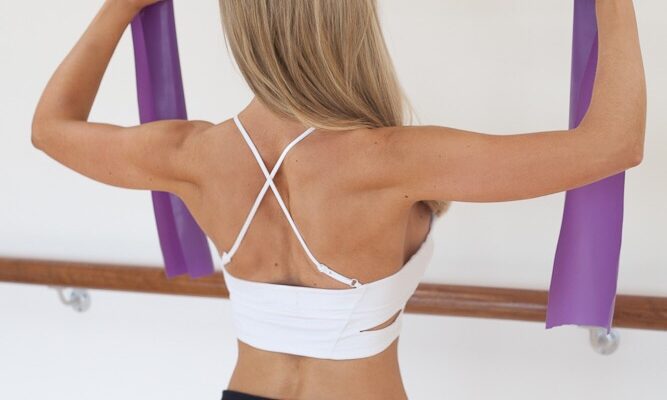Engaging in regular exercise is a cornerstone of a healthy lifestyle, but it’s equally important to recognise when and how to use supports during your workouts. Whether you’re a seasoned athlete or a fitness enthusiast, the strategic use of supports can enhance your performance, prevent injuries, and contribute to overall well-being. In this guide, we explore situations in which incorporating supports into your exercise routine can be beneficial.
Heavy Lifting: Protecting Your Core and Joints
When undertaking weightlifting or resistance training, your body’s core and joints are put under substantial stress. Utilising supports such as weightlifting belts can provide crucial stability to your lumbar spine, reducing the risk of injury. These belts work by increasing intra-abdominal pressure, offering support to the lower back and allowing you to lift heavier weights with proper form.
However, it’s essential to use weightlifting belts selectively. Reserve them for exercises that involve heavy loads and intense spinal stress, such as squats and deadlifts. Over reliance on supports may hinder core strength development, so use them judiciously to enhance, not replace, your body’s natural stabilisation mechanisms.
Joint Support for High-Impact Activities: Reducing Stress
High-impact exercises, like running or jumping, can subject your joints to significant stress. If not managed properly, this stress may lead to injuries or chronic joint issues over time. This is where supports such as knee braces or compression sleeves come into play.
Wearing knee supports for running from Bearhug can provide additional stability to the joint, particularly beneficial for individuals with a history of knee injuries or those engaging in activities that place repeated stress on the knees. Compression sleeves, on the other hand, can improve blood circulation and reduce inflammation, aiding in both performance and recovery. Consider using these supports during high-intensity workouts or when engaging in activities that involve repetitive impact.
Recovery Phase: Embracing Restorative Supports
Post-exercise recovery is a crucial aspect of any fitness regimen, and supports can play a pivotal role in this phase. Compression garments, such as sleeves for the calves or compression tops, can facilitate better circulation and reduce muscle soreness. These supports are particularly beneficial after intense workouts or during periods of increased training volume.
Additionally, foam rollers and massage tools act as supports for muscle recovery. Incorporating these aids into your post-workout routine can help release muscle tension, improve flexibility, and expedite the healing process. Using supports during the recovery phase ensures that your body is adequately prepared for subsequent workouts, reducing the risk of overuse injuries.
Corrective Supports: Enhancing Form and Function
Supports are not only beneficial for injury prevention but can also play a role in improving form and addressing muscular imbalances. For instance, if you have flat feet or over-pronation, using orthotic insoles can provide support and alignment for your feet during various exercises. This can contribute to proper biomechanics and reduce the risk of injuries associated with poor foot alignment.
Similarly, individuals with wrist discomfort during weight-bearing exercises may benefit from using wrist wraps. These wraps offer additional support to the wrist joint, allowing for better stabilisation and form during exercises like push-ups or bench presses.
Conclusion
The strategic use of supports can be a valuable asset in optimising your workout routine. Recognising when to incorporate these aids, whether for injury prevention, performance enhancement, or corrective purposes, is key to reaping the benefits without compromising your long-term fitness goals. As with any aspect of fitness, it’s advisable to consult with a healthcare professional or fitness expert to determine the most suitable supports for your individual needs and circumstances. Integrating supports judiciously into your exercise routine can create a well-rounded approach that promotes both safety and progress in your fitness journey.

